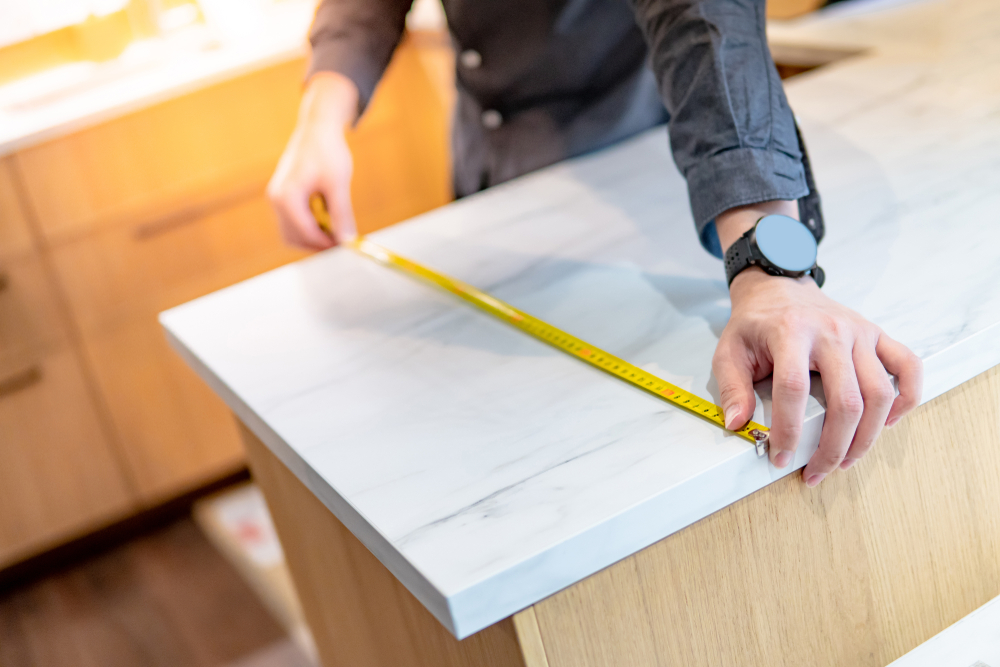If you are a homeowner who is looking to remodel your kitchen with some fresh and new natural stone countertops, then we at Architecture Stones would be more than happy to be the ones hired to do the job for you. However, if you haven’t gone through the process of selecting and having new countertops installed in your home, then you may be wondering what that process actually looks like. If you choose us for your kitchen remodel and/or stone countertop needs, then the polished and beautiful quartz, marble, or granite countertops that you choose to have installed in your kitchen will undergo an extensive process of stone fabrication to achieve the optimal finished product and aesthetic.
Stone fabrication
There is a lot that occurs during the stone fabrication process and a lot of the process has to do with allowing our customers to get the most from their countertops for years to come. Our fabrication process is done by a person whose specialty is stone fabrication. In some cases, our granite supplier will also specialize in stone fabrication and everything can be done at their shop prior to being delivered to us. The convenience of having access to a one-stop shop like this can lead to having a lot more control over the entire fabrication process.
Inspection
During this step, a fabricator will inspect the chosen slab. Stone, being a natural product, often contains characteristics indigenous to that particular material, so some of these characteristics include dry seams, black spots, polyester resin fill, pits, natural directional veining, feldspar, or mica conglomerates (knots). Often times, these marks make the stone what it is, unique and beautiful. On occasion, a customer may find certain characteristics unacceptable and the stone fabricator will work to avoid those during the templating and fabrication process.
Prior to templating, a final inspection is made of the stone, identifying any areas unacceptable to the customer, or areas that are more severe than the normal characteristics described above. The fabricator will mark those areas and work to avoid those during templating while balancing the effort to minimize waste (and therefore costs as well).
Templating and cutting
Once the slab is inspected, it is then laid out and the previously created templates are arranged on the stone to ensure the best appearance of both vein texture and color. The templates are also arranged to ensure appropriate flow for the various countertops in your selected layout. The stone is then cut using either a water jet or a bridge saw. Historically, the bridge saw has been the favored tool, however, in recent years the “saw jet” which is a combination of a water jet and saw has come to be a popular choice as well. Once the pieces are cut from the large slab, those pieces are forwarded to a CNC machine and with the help of a vacuum lifting system, the granite countertop pieces are then fabricated.
Quality control and installation
The final step in the process is the inspection of the stones. The stone fabricator will ensure the edges are uniform around all sides of the stone(s). Then they will be reviewed from multiple angles to make sure the light bounces off the edges uniformly and the color of the top of the stone and the edges match. At this point, we have a finished product ready to be installed in your home. Polishing and sealing will be done once the stone is installed.
If you have any further questions, please contact us!

